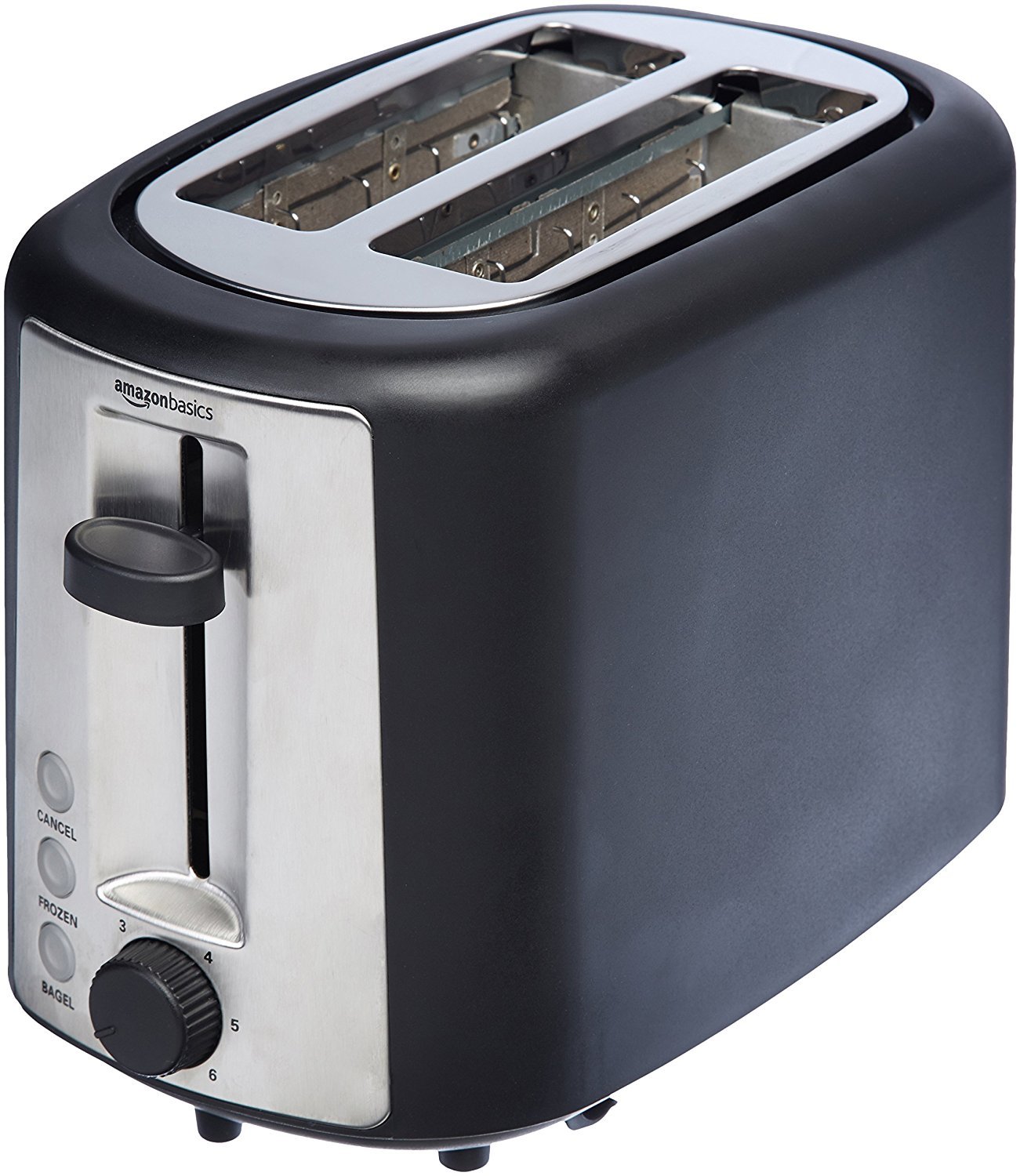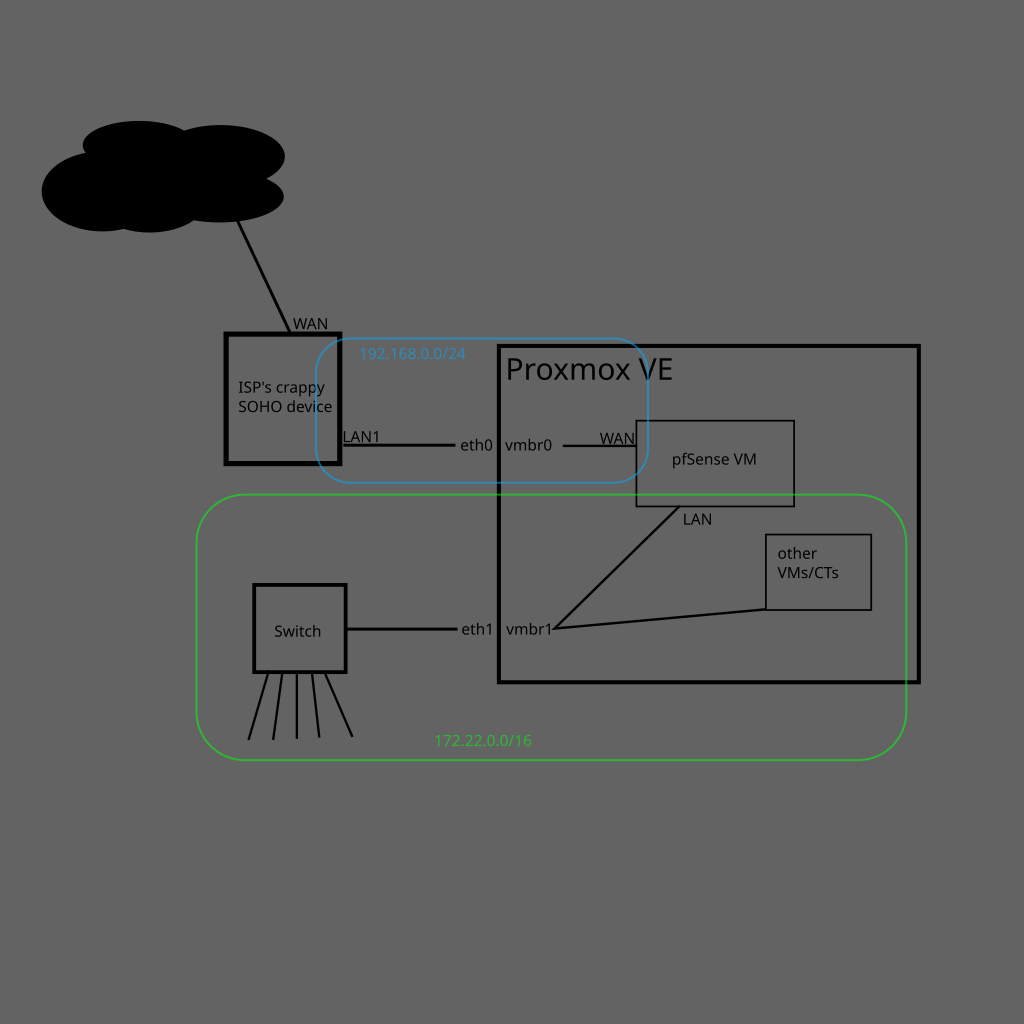A mess.
I have 5 servers in total. All except the iMac are running Alpine Linux.
Internet
Ziply fiber 100mb small business internet. 2 Asus AX82U Routers running in AiMesh.
Rack
Raising electronics 27U rack
N3050 Nuc’s
One is running mailcow, dnsmasq, unbound and the other is mostly idle.
iMac
The iMac is setup by my 3d printers. I use it to do slicing and I run BlueBubbles on it for texting from Linux systems.
Family Server
Hardware
- I7-7820x
- Rosewill rackmount case
- Corsair water cooler
- 2 4tb drives
- 2 240gb ssd
- Gigabyte motherboard
Mostly doing nothing, currently using it to mine Monero.
Main Cow Server
Hardware
- R7-3900XT
- Rosewill rackmount case
- 3 18tb drives
- 2 1tb nvme
- Gigabyte motherboard
Services
- ZFS 36TB Pool
- Secondary DNS Server
- NFS (nas)
- Samba (nas)
- Libvirtd (virtual macines)
- forgejo (git forge)
- radicale (caldav/carddav)
- nut (network ups tools)
- caddy (web server)
- turnserver
- minetest server (open source blockgame)
- miniflux (rss)
- freshrss (rss)
- akkoma (fedi)
- conduit (matrix server)
- syncthing (file syncing)
- prosody (xmpp)
- ergo (ircd)
- agate (gemini)
- chezdav (webdav server)
- podman (running immich, isso, peertube, vpnstack)
- immich (photo syncing)
- isso (comments on my website)
- matrix2051 (matrix to irc bridge)
- peertube (federated youtube alternative)
- soju (irc bouncer)
- xmrig (Monero mining)
- rss2email
- vpnstack
- gluetun
- qbittorrent
- prowlarr
- sockd
- sabnzbd
Why do you host FreshRSS and MiniFlux if you don’t mind me asking?
I kind of prefer mini flux but I maintain the freshrss package in Alpine so I have an instance to test things.
Thank you. I’m looking at sorting an aggregator out and am leaning towards Miniflux


It’s running NetBSD, isn’t it?
I only use the highest of grade when it comes to hardware
Case: found in the trash
Motherboard: some random Asus AM3 board I got as a hand-me down.
CPU: AMD FX-8320E (8 core)
RAM: 16GB
Storage: 5x2tb hdds + 128gb SSD and a 32GB flash drive as a boot device
That’s it… My entire “homelab”
Beautiful. 🫠
A single nuc with I dunno what
-
Server - Desktop Tower
- Build - Intel server board & CPU based on old serverbuild naskiller guide
- OS on SSD
- ZFS ON 8 6TB DRIVES, YIELDING ~36TB of storage, recoverable with up to two failed drives
- Runs (via docker)
- Navidrome (webui used daily @ work, dsub on phone, feishin on desktop)
- Jellyfin (used almost exclusively locally on my TV, occasionally to watch with friends on web)
- Nextcloud (used occasionally, mostly backs up password files, etc or to share. Thinking about replacing.)
- QBitTorrent with glutun VPN
- Audiobookshelf - used frequently for audiobooks. Occasionally for podcasts. Often more convenient to use antennapod/pocket casts on phone for active podcasts)
- Kavitas - used seldom. Thinking about stopping. I like using obps on my rooted kindle to access my library.
- Changedetection.io -watch some sites for new products, etc
- Kiwix (local wikipedia copy I use shortcuts in FF locally to search for things)
- Homepage (local links I use on local machines to my services)
- Build - Intel server board & CPU based on old serverbuild naskiller guide
-
Raspberry pi
- Adguard home & unbound - block most garbage for any traffic from my home
Thoughts - I’m considering downsizing. I don’t really need all that much space, and it can be a headache at times. With drive replacement costs on top of power (~$320 a year) I consider either going to a vps or downsizing to what could run on a small compute like the n100 or a raspberry pi5, etc.
Look for 5W idle consumption boards + CPU combos which go down to package C6+ state. HardwareLuxx has a spreadsheet with various builds focusing on low power. Sell half your disks, go mirror or Raidz1. Invest the difference in off-site vps and or backup. Storage on any SBC is a big pain and you will hit the sata connector / IO limits very soon.
The small NUC form factors are also fine, but if your problem is power you can go very low with a good approach and the right parts. And you’ll make up for any new investments within the first year.
Thanks! I need to look more into what the power implications of 8 drives is - they never spin down, so I assume they are a non-trivial portion of my power consumption.
That said, I’ve been considering upgrading to something recent and low power anyways. It would be a good opportunity to sneak in some useful features too,
- Maybe the possibility of transcoding a video stream
- USB3 (not a huge deal)
- Non VGA display (useful, for when connection issues arise)
- Audio jack (I could use navidrome jukebox mode!)
Which the old hardware wouldn’t support without adapters, cards, etc.
Responding to myself…
Datasheet reports 7.05 idle watts (~11w at active random read) so depending on what it considers idle, it’d be 8*7.05|11= 56.4:88W
Server clocks in at ~102W. Halving the drives would reduce the power by 27 : 43%
And in theory other components (motherboard, CPU…) must be using anywhere from (102-88) :(102-56.4)= 14 : 45.6 W.
Oh okay that’s a lot of power. For reference, I just set up an old Haswell PC as a NAS, idling at 25W (can’t get to low Package C states) and usually at 28-30 running light workloads on an SSD pool. My plan was to add a 5 disk cage and at least 3 HDDs, with Raidz2 and 5 disks being the mid term goal. Absolutely unnecessary and a huge waste. I settled on less but larger disks, and in mirror I can get 12-18 TB usable space for under 500€. Less noise and power draw too.
Which vpn provider do you use for torrents?
Proton, some of their paid exit nodes support P2P
-
Bad. I have a Raspberry Pi 4 hanging from a HDMI cable going up to a projector, then have a 2TB SSD hanging from the Raspberry Pi. I host Nextcloud and Transmission on my RPi. Use Kodi for viewing media through my projector.
Like a fucked up ACL trying to do a kind of least-priviledged filesystem knowing absolutely nothing.
And 2 NUCs.
Pi4 with 2TB SSD running:
- Portainer
- Calibre
- qBittorrent
- Kodi
HDMI cable straight to the living room Smart TV (which is not connected to the internet).
Other devices access media (TV shows, movies, books, comics, audiobooks) using VLC DLNA. Except for e-readers which just use the Calibre web UI.
Main router is flashed with OpenWrt and running DNS adblocker. Ethernet running to 2nd router upstairs and to main PC. Small WiFi repeater with ethernet in the basement. It’s not a huge house, but it does have old thick walls which are terrible for WiFi propogation.
Internet:
- 1G fiber
Router:
- N100 with dual 2.5G nics
Lab:
- 3x N100 mini PCs as k8s control plane+ceph mon/mds/mgr
- 4x Aoostar R7 “NAS” systems (5700u/32G ram/20T rust/2T sata SSD/4T nvme) as ceph OSDs/k8s workers
Network:
- Hodge podge of switches I shouldn’t trust nearly as much as I do
- 3x 8 port 2.5G switches (1 with poe for APs)
- 1x 24 port 1G switch
- 2x omada APs
Software:
- All the standard stuff for media archival purposes
- Ceph for storage (using some manual tiering in cephfs)
- K8s for container orchestration (deployed via k0sctl)
- A handful of cloud-hypervisor VMs
- Most of the lab managed by some tooling I’ve written in go
- Alpine Linux for everything
All under 120w power usage
How are you finding the AooStar R7? I have had my eye on it for a while but not much talk about it outside of YouTube reviews
They’ve been rock solid so far. Even through the initial sync from my old file server (pretty intensive network and disk usage for about 5 days straight). I’ve only been running them for about 3 months so far though, so time will tell. They are like most mini pc manufacturers with funny names though. I doubt I’ll ever get any sort of bios/uefi update
Proxmox VE on a machine that I got almost for free. Intel i3-4160, 10GB RAM, 240GB SSD for the OS, and a non-redundant 1T HDD for storage. The only things I paid for are a second NIC and an 8GB RAM stick.
PVE is running a pfSense VM, and a bunch of Debian containers:
- Samba
- Jellyfin (still setting it up)
- Twingate Connector
All internet traffic goes through the pfSense VM. Unfortunately the ISP has put me behind CGNAT and disabled bridge mode, so my internet-facing things (mostly Wireguard and SSH) are pretty much crippled. Right now my best no-cost option is to use Twingate, but I don’t trust it to handle anything other than SSH.

If behind CGNAT and forwarding is not an option, Headscale, Tailscale or ZeroTier may be an option. I use Tailscale and it have ZERO forwarding on and can access anything on my network when connected through it. Think of these as Wireguard on Steroids. :)
I tried Tailscale once, but it introduced some massive latency because apparently I got connected to my machine through a gateway in Frankfurt. It was the Tailscale Funnel service though, so maybe that’s not what I needed.
Also, are any of the services you listed end-to-end encrypted?
Tailscale is but since you already tried them, maybe headscale that’s supposed to be the self hosted version of Tailscale that someone wrote, so you have better odds at less latency! https://headscale.net/
Zerotier? Not sure -https://www.zerotier.com/ can speak more to this.
deleted by creator
looks like this and runs NetBSD
Services:
- OpenSSH

Why?
I don’t understand, why what my lemmy?
-
Ryzen 2700X on a gigabyte B450i
-
Arc A380
-
2 mirrored 4TB HDDs and 1 12 TB HDD, luks encrypted and on 2 zpools (I have an “unsafe” mount path for data on a single drive like media)
-
removable flash drive with boot partition and main SSD keyfile
-Zwave dongle
That’s it.
I can run everything I need to on it and my home internet is only 100/30 still because I don’t live in a city, so 2.5gig networking isn’t worth the cost. a380 does all of the hardware transcoding I need at a fairly low power. It isn’t as good as just getting a newer NUC, but it was cheaper and a fun project.
Also doing a full renovation, so KNX will be connected for home assistant to control my lights and things and my smart home stuff will probably balloon.
-











